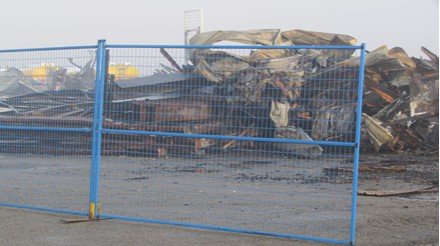Search for Human Remains Continues
By 250 News
Friday, March 26, 2010 11:31 AM

Piles of heavy debris have yet to be searched as experts look for any sign of human remains at the NT Air Hangar site
Prince George, B.C.- Forensic Anthropologist, Dr. Richard Lazenby expects to complete the search of the small debris piles at the NT Air Hangar fire site later today, or early tomorrow.
Dr. Lazenby, some of his students and a team of RCMP forensic specialists are combing through the debris for possible signs of human remains. Prince George resident, 55 year old Vernon Martin has been missing and is presumed to have died in the fire which levelled the hangar on December 19th.
Dr. Lazenby says the system they are using for searching the debris is very efficient “A front end load takes about half a bucket and spreads it out over this concrete area which used to be the working area of the hangar. Then our team rakes through the debris for any sign of human remains. We are having an excellent look at all the materials here.”
Dr.Lazenby and the team have been going through the debris for three days now. Once the small debris piles have been dealt with Dr. Lazenby says they will bring in an excavator to carefully lift the timbers and large pieces of debris “If he is here, we will find him.”
Previous Story - Next Story
Return to Home








